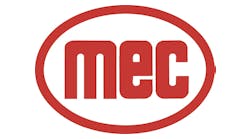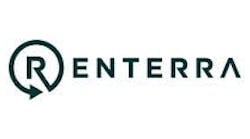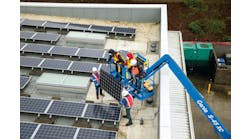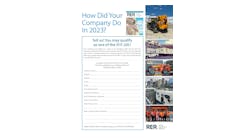Essex Rental Corp. last week posted a 41.2-percent decrease in second-quarter rental-related revenue. Excluding used rental equipment sales, Essex reported $11.9 million, a decrease of 41.2 percent from $20.2 million in last year’s second quarter. The decline was primarily because of lower equipment rental revenue attributable to lower utilization rates on cranes and attachments, which represented 61 percent of total revenue, or $8.9 million for the three months ended June 30, compared to $15.8 million in the predecessor’s comparable period in 2008.
“Our performance in the second quarter reflects continued weakness in many of our end markets, which resulted in lower crane fleet utilization and rental revenues,” said Ron Schad, Essex president and CEO. “Many of our customers have delayed the start of their projects due to inability to access the credit markets, general economic uncertainty and diminished demand for large construction.”
Selling, general, administrative and other expenses were $2.9 million, a 16.1-percent decrease from $3.5 million. The net decrease was primarily due to a decline in compensation expense of $400,000 and lower professional fees of $700,000, which in the predecessor company related to Essex’s acquisition of Essex Crane, partially offset by higher operating expenses associated with being a public company. These reductions were partially offset by higher expenses associated with being a public company.
Rental EBITDA was $5.1 million, a 50.4-percent decrease from $10.3 million, due to lower utilization rates.
To offset decreased demand, the company has implemented several cost-cutting initiatives, including reducing headcount, eliminating the use of outsourced services for many projects and significantly reducing overtime labor hours. In May, Schad and the senior management team elected to take salary reductions of 30 percent and 20 percent, respectively, and all salaried managers took a 10-percent reduction. The company has also reduced the work week for its hourly and certain other salaried personnel.
In the second quarter, Essex Crane was able to decrease its compensation expense by $400,000 and the company projects that these additional actions will result in a combined total of nearly $5 million in annualized savings. These measures were taken in an effort to avoid having to further eliminate positions within the organization.
“Despite the current economic weakness, we continue to focus on our growth strategy of repositioning the fleet to heavier lifting capacity cranes that generate higher rental and utilization rates,” Schad said. “Over the past six months, we have sold nine used cranes, at an average price that was in excess of 110 percent of orderly liquidation value. We have used these proceeds, in conjunction with our free cash flow, to fund the purchase of nine new larger lifting capacity cranes and attachments. This in turn has improved the fleet’s mix and market position, further enhancing the future earnings power of the business. As a result of our direct purchase relationships with key equipment suppliers, we have secured this new equipment on terms that we believe will generate an attractive return on capital.”
The total number of actual crane rental days for the second quarter 2009 equaled 43.9 percent, compared to 72.4 percent in the predecessor’s comparable period in 2008. The decrease in utilization was the result of excess market supply of rental equipment, compared to the demand in a weakening economy and a difficult commercial credit environment. The decline in utilization was partially offset by an increase in the average monthly crane rental rate of 1.5 percent to $21,633 for the three months ended June 30, relative to the predecessor’s average monthly crane rental rate of $21,303 for its comparable period in 2008. This increased average crane rental rate is primarily due to the continued shift in the mix of cranes on rent, towards larger, higher rental rate cranes.
“Based on our analysis of a number of business metrics and current visibility, we believe that while our operating environment will remain challenging through the end of the fiscal year, the business has stabilized, as evidenced by the relative equalization of rental starts and ends,” Schad said. “We anticipate that these factors, in addition to increased federal stimulus spending subsequent to the end of the second quarter, specifically related to heavy highway work and other projects that target many of our end markets, will result in an increase of orders placed for the rental of crawler cranes in the next six to nine months.
“Our confidence in our strategy to grow our business by the migration of our fleet towards higher lift capacity crawler cranes has influenced us to take advantage of outstanding opportunities to continue investing in new cranes. Our decision to continue investing in our fleet will require the use of some of our free cash flow to fund these attractive investments and therefore, this decision, combined with the impact of lower rental revenues, will most likely cause us to not achieve the after-tax free cash flow range of $0.90 to $1.20 per share previously targeted. We feel the use of cash to purchase new high capacity cranes on attractive terms represents the best opportunity to ensure our future growth and provide a superior return on our invested capital.”
Headquartered in Buffalo Grove, Ill., Essex, through its subsidiary, Essex Crane, is one of North America’s largest providers of lattice-boom crawler crane and attachment rental services. It is No. 30 on the RER 100.





